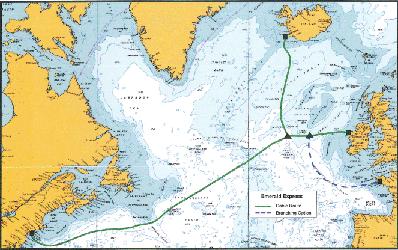Google Mulls Underwater Cable Investment – Report

Google is reportedly looking to make an investment in a new subsea cable in the Pacific Ocean
Google’s network ambitions looks like it could take another step forward: reports say the search engine giant is mulling investing in a new subsea cable.
The company is reportedly considering putting money into a new multi million dollar cable that will span the Pacific Ocean, according to the Wall Street Journal (WSJ), citing people familiar with the matter.
Private Networks
The WSJ says private companies are increasingly sending large amounts of traffic across private networks, and investing in their own networks, instead of public networks, which gives them more control over quality and prioritisation of their traffic before it reaches consumers.
Apparently, Google would control its own portion of the new subsea cable and use it to connect data centres in Oregon and elsewhere with Japan. And according to the WSJ, this is not the first time that Google has done this.
 Back in 2010, it reportedly took a stake in a similar $300 million (£176m) undersea cable. When these undersea cables are laid, telecom companies typically bundle a number of their own fibre optic lines into a single underwater cable. That way, they can share the cost of construction in the lengthy cable deployment, which is carried out from the back of a cable-laying ship.
Back in 2010, it reportedly took a stake in a similar $300 million (£176m) undersea cable. When these undersea cables are laid, telecom companies typically bundle a number of their own fibre optic lines into a single underwater cable. That way, they can share the cost of construction in the lengthy cable deployment, which is carried out from the back of a cable-laying ship.
The Journal pointed to research from TeleGeography, which states that tech companies, banks, and research organisations already use a quarter of the world’s international bandwidth to send information across private networks instead of the public Internet. Thus private networks account for as much as 40 percent of the traffic on certain corridors, like those across the Atlantic Ocean.
“It’s almost an arms race now,” Yousef Khalidi, an engineer at Microsoft charged with managing the company’s network was quoted as saying. “You have to invest in a lot of hardware to be in the business.”
B4 Network
Microsoft is also reportedly in talks to help build a cable connecting China, South Korea and Japan with the US, to help it shuttle data stored by its Azure cloud-computing service.
Apparently, much of Google’s bandwidth is reserved for its private “B4” network, which handles emails, YouTube videos and other traffic among about a dozen of its data centres. That B4 network is reportedly more than three years old now, and already carries more traffic than the public-facing one Google uses to send its search results and YouTube videos to the Internet.
Google has long held its own private network ambitions. Earlier this year it revealed that its Google Fiber Network in the United States will be extended to 34 cities across nine major metropolitan areas. It said it would confirm which cities will be receiving the network later this year following initial consultations with leader in each of the target cities.
The Google fibre project was first announced back in 2010, with the search giant confirming the three initial sites in April 2013, although the rollout of the Kansas City project was placed on indefinite hold as the city’s leaders questioned potential legal issues and responsibilities if problems developed with the service.
Are you a Google expert? Take our quiz!